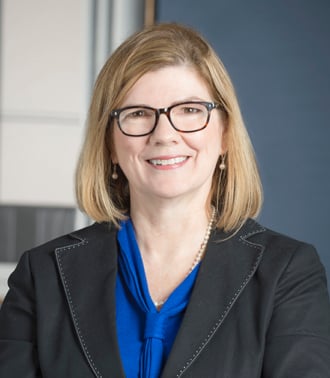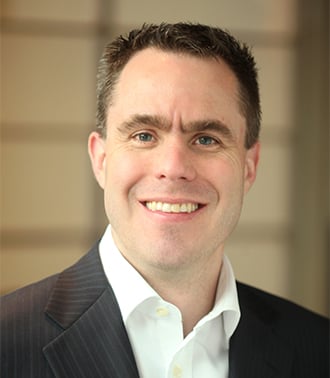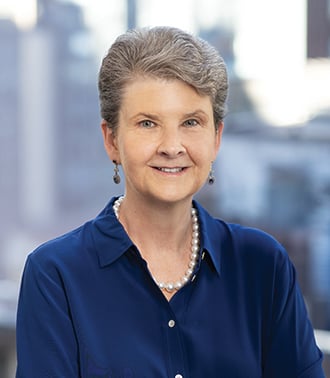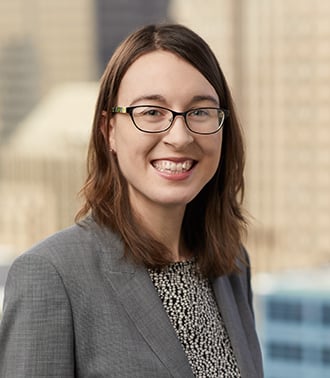SECURE 2.0 Brings Significant Changes to Retirement Plans
On December 29, 2022, the SECURE 2.0 Act of 2022 (SECURE 2.0) was passed by Congress as part of the Consolidated Appropriations Act of 2023. SECURE 2.0 builds on changes made in the 2019 Setting Every Community Up for Retirement Enhancement Act (the SECURE Act) and makes significant changes to US retirement plan laws.
Many of the changes introduced by SECURE 2.0 will require additional guidance from the Internal Revenue Service to clarify and interpret the application of those provisions. Plan sponsors who have a standardized or prototype plan should work with providers regarding implementation of these changes.
Below is a summary of some of the key changes made by SECURE 2.0.
Provisions Affecting Plan Design
- Increase in mandatory cashout amount. Effective for distributions made after December 31, 2023, SECURE 2.0 increases the mandatory cashout limit from $5,000 to $7,000.
- Roth provisions. SECURE 2.0 makes several changes which relate to Roth (after-tax) contributions to retirement plans:
- Effective for taxable years beginning after December 31, 2023, the requirement to pay pre-death required minimum distributions for Roth amounts in employer retirement plans (such as 401(k) plans) is eliminated. Distributions required for years prior to January 1, 2024, that may be paid after January 1, 2024, are still required.
- Under current law, employer matching contributions and nonelective contributions to 401(a), 403(b), and governmental 457(b) plans must be made on a pre-tax basis and cannot be made on a Roth basis. Effective for contributions made after December 29, 2022, participants in these plans may elect to receive employer matching contributions and nonelective contributions on a Roth basis.
- Under current law, catch-up contributions may be made to 401(k), 403(b), and governmental 457(b) plans on a pre-tax or Roth basis. Effective for taxable years beginning after December 31, 2023, catch-up contributions must be made on a Roth basis to these plans, except for participants whose wages were $145,000 or less for the prior calendar year from the employer sponsoring the plan.
- Increase in catch-up contribution limit for participants aged 60 to 63. SECURE 2.0 increases the catch-up contribution limit under 401(k), 403(b), and governmental 457(b) plans to the greater of $10,000 or 150% of the regular catch-up amount for 2024 for participants aged 60 to 63 (with different rules to apply to SIMPLE plans). This change applies for taxable years beginning after December 31, 2024, and cost-of-living adjustments will be applied to taxable years beginning after December 31, 2025.
- Student loan matching. An employer contribution made for qualified student loan payments will be treated as an employer matching contribution if specified rules are met, and the employer can rely on certification of loan payments by employees. Generally, this provision will apply for plan years beginning after December 31, 2023 to 401(k), 403(b), SIMPLE IRAs, and governmental 457(b) plans.
- Autoenrollment. New 401(k) and 403(b) plans are required to provide for an eligible automatic contribution arrangement, as follows:
- The default contribution rate must be no less than 3 percent, with a maximum of 10 percent.
- The provision would require automatic escalation of 1 percent a year to a maximum of at least 10 percent, but no greater than 15 percent.
- An automatic enrollment could be “unwound” within 90 days.
- In general, this provision would be effective for plan years beginning after December 31, 2024 and would not apply to plans in existence on December 28, 2022 (other than through the adoption of a multiple employer plan after that date).
- Other exceptions from the rule exist for certain small employers and new employers, governmental and church plans, and SIMPLE plans.
- Emergency funds and withdrawals. SECURE 2.0 includes several provisions to make it easier for plans to help relieve the emergency needs of employees, effective for distributions made after December 31, 2023.
- Plans may allow one withdrawal of up to $1,000 per year that would be exempt from the 10 percent penalty on early withdrawals for the purpose of “unforeseeable or immediate financial needs relating to personal or family emergency expenses.” The withdrawal may be repaid withing three years. Additional rules for subsequent withdrawals apply if the first withdrawal is not repaid.
- Defined contribution plans such as 401(k) plans may offer short-term emergency savings accounts to which non-highly compensated employees may make contributions of up to $2,500. Complicated rules apply to withdrawals, investments, and other features of these accounts.
- Hardship withdrawals.
- Currently, a 401(k) or 403(b) plan administrator reviewing hardship withdrawal requests may rely on participant certifications that they have no other reasonably available resources to satisfy their financial need, unless the administrator has actual knowledge to the contrary. Effective for plan years beginning after December 29, 2022, the administrator may also rely on participant certifications that they have suffered a safe harbor hardship event (i.e., an event set forth in Treasury regulations that is deemed to be an immediate and heavy financial need).
- Effective for plan years beginning after December 31, 2023, the hardship withdrawal rules for 403(b) plans are conformed to such rules for 401(k) plans. As a result, a 403(b) plan may allow participants to withdraw QNECs, qualified matching contributions, and earnings on such amounts and on elective deferrals, and to obtain a hardship withdrawal without first obtaining available loans.
- Part-time workers. SECURE 2.0 builds on changes in the SECURE Act regarding part-time workers.
- Under the SECURE Act, 401(k) and 403(b) plans were required to allow part-time employees to participate either after (i) one year of service in which the employee met a 1,000 hours of service requirement or (ii) three consecutive years of service with a 500 hours of service requirement. Effective for plan years beginning after December 31, 2024, the three-year period is reduced to two years (with years beginning before January 1, 2023, not being taken into account).
- Certain pre-2023 service is disregarded for eligibility and vesting purposes under the expanded SECURE 2.0 rules.
- Automatic portability provisions. SECURE 2.0 creates a statutory prohibited transaction exemption which permits a service provider to receive compensation in connection with transferring assets:
- From an individual retirement plan established on behalf of an individual to which assets were transferred pursuant to the automatic rollover of a mandatory cash out distribution;
- To an employer-sponsored defined contribution plan under which the individual is an active participant; and
- After the individual has been given advance notice of the transfer and has not opted out of the transfer.
This prohibited transaction exemption is subject to certain conditions, including but not limited to, the service provider being required to acknowledge fiduciary status, providing required notices and being subject to certain restrictions regarding fees, and marketing and selling data. These provisions apply to transactions occurring on or after December 29, 2023, and subsequent Department of Labor guidance is expected.
- Distributions for terminal illness and domestic violence.
- Effective for distributions made after December 31, 2023, plans can provide for early withdrawals without being subject to the 10 percent penalty on early withdrawals in circumstances of domestic abuse, up to a maximum of $10,000 (or 50 percent of the vested account if less). Participants can repay such withdrawals to the plan, subject to certain requirements.
- Effective December 29, 2022, distributions made to employees who have been certified by a physician as having a terminal illness will not be subject to the 10 percent penalty on early withdrawals.
- Repayment of qualified birth or adoption distributions limited to three years. The SECURE Act did not provide for a time period for repayment of a “qualified birth or adoption distribution” in order for the repayment to qualify as a rollover contribution. SECURE 2.0 requires the repayment within three years of the distribution to qualify as a rollover contribution. This provision is effective for distributions made after December 29, 2022, and for distributions made on or before such date, the repayment must be made by the end of 2025.
Retirement Plan Corrections
- Expansion of EPCRS. Effective December 29, 2022, SECURE 2.0 expands the IRS Employee Plans Compliance Resolution System (EPCRS) as follows:
- A plan can self-correct any eligible inadvertent failure, including plan loan failures, at any time (whether significant or insignificant) in accordance with the correction principles of EPCRS, unless the IRS identifies the failure prior to the commencement of self correction measures or the failure is not corrected within a reasonable period after identification of the failure.
- An "eligible inadvertent failure" is a failure that occurs in spite of the plan having practices and procedures in place to comply with the applicable Internal Revenue Code (Code) requirements and excludes any failure that is egregious, relates to the diversion or misuse of plan assets or is related to abusive tax avoidance transactions.
- Inadvertent benefit overpayments. Effective December 29, 2022, SECURE 2.0 provides relief to 401(k), 403(b), and governmental 457(b) plans that make inadvertent benefit overpayments.
- A 401(a), 403(b), or governmental 457(b) plan will not lose its tax-favored status because the plan does not attempt to recover an inadvertent benefit overpayment from a participant or beneficiary, or otherwise fails to make the plan whole for such an overpayment, provided that the plan continues to satisfy certain Code requirements, including Code Sections 401(a)(17) and 415 and minimum funding, as applicable.
- The overpayment can be treated as an eligible rollover distribution to the extent that the plan administrator does not attempt to recover the overpayment.
- Restrictions are imposed on the ability of a plan administrator to offset an overpayment against future benefits or to recover the overpayment directly from the participant (e.g., no interest payable to the plan on the overpayment, no threats of litigation, no use of a credit agencies).
- Fiduciary relief is provided for plan fiduciaries that do not make the plan whole after an overpayment.
Required Minimum Distributions (RMDs)
- Increase in age at which RMDs must begin. Effective for distributions made after December 31, 2022, SECURE 2.0 increases the age at which participants are required to begin receiving RMDs (i) from age 72 to age 73, for participants who reach age 72 after December 31, 2022, and age 73 before January 1, 2033 and (ii) from age 73 to 75, for participants who reach age 74 after December 31, 2032.
- Reduction in excise tax for RMD failures. Effective for taxable years beginning after December 29, 2022, SECURE 2.0 reduces the penalty for not taking a RMD (i) from 50 percent to 10 percent of the shortfall amount, if the RMD failure is corrected within two years after the year of the failure or (ii) from 50 percent to 25 percent of the shortfall amount, if the RMD failure is not corrected within such two-year period.
Effective Dates and Plan Amendments
As indicated in the summary above, the effective dates of the provisions of SECURE 2.0 vary, with some having taken effect as of January 1, 2023. Although plans are required to comply with the new law for each provision as of the relevant effective date, plans are not required to be amended until the end of the first plan year beginning on or after January 1, 2025.
© Arnold & Porter Kaye Scholer LLP 2023 All Rights Reserved. This Advisory is intended to be a general summary of the law and does not constitute legal advice. You should consult with counsel to determine applicable legal requirements in a specific fact situation.




